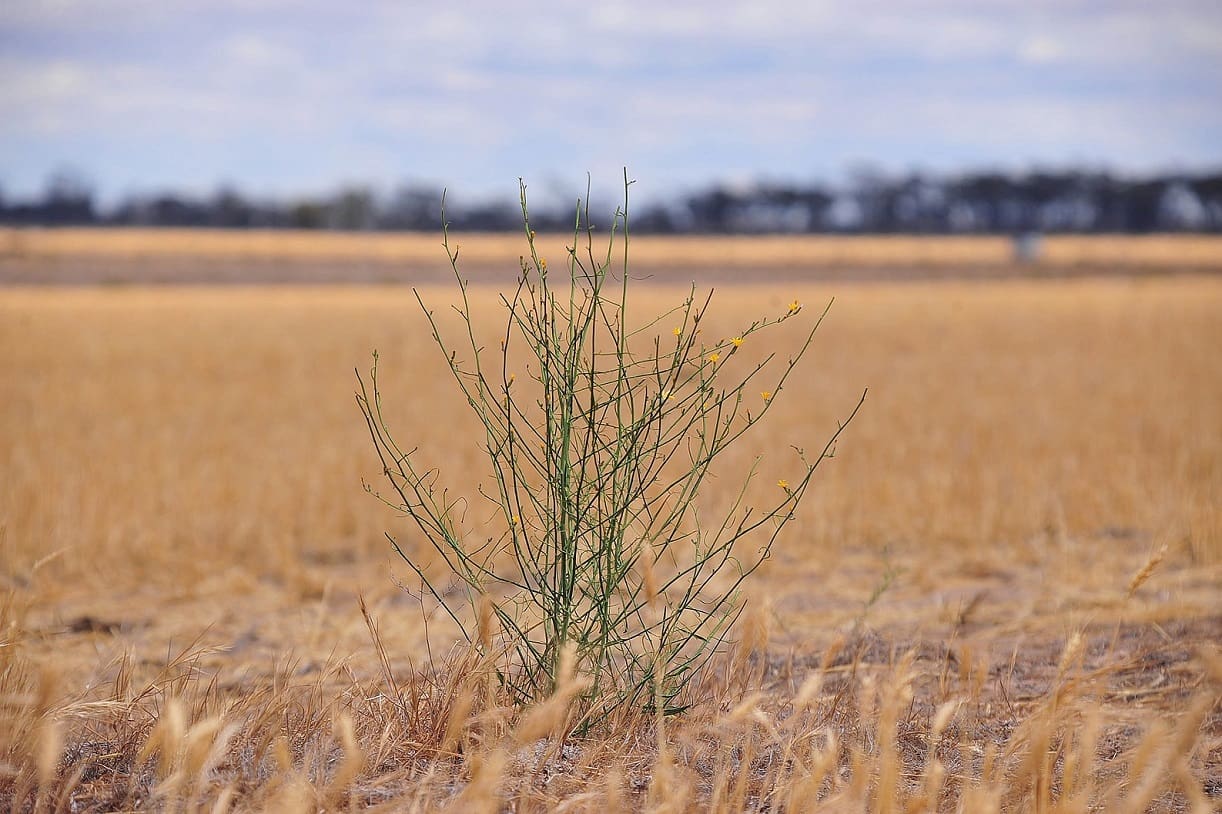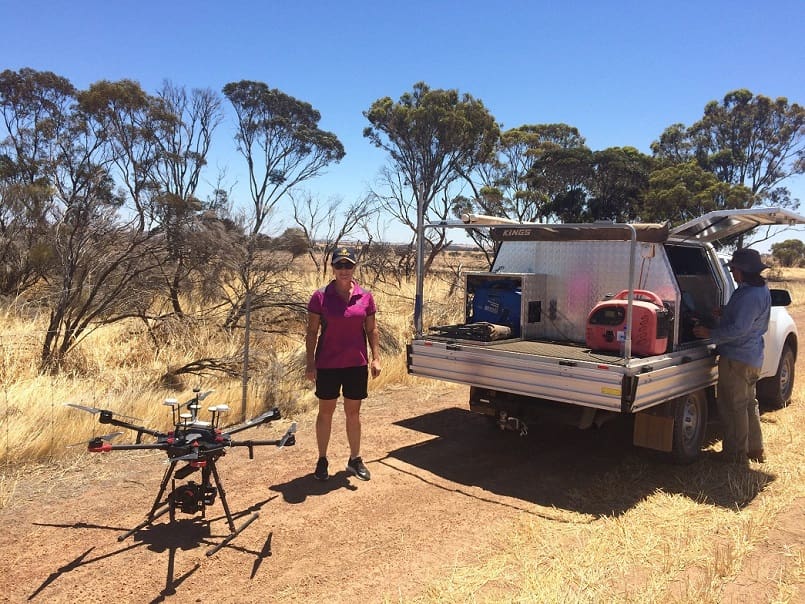
Skeleton weed has upright and usually leafless stems which gives the appearance of the skeleton of a plant – hence the plant’s common name.
PADDOCK searches for skeleton weed this summer are set to begin in Western Australia, with landholders reminded to keep watch for the weed, which can tie up nitrogen and soil moisture, and cut crop yields.
The search program is a combined effort between farmers, the WA Department of Primary Industries and Regional Development and six Local Action Groups (LAGs).
While traditional vehicle surveillance accounts for the majority of the program, Unmanned Aerial Vehicles (UAVs – or drones) are also covering more ground.

Lakes Local Action Group Skeleton Weed coordinator Lynette Carruthers with a drone used in 2018-19 skeleton weed surveillance over summer.
The summer searching program focuses on infested properties, and is complemented by targeted surveillance aimed at finding new infestations that landholders may not be aware of.
DPIRDt project manager Martin Atwell said skeleton weed was a declared plant which reduced crop yields by competing for moisture and nutrients.
“The weed can often be found in paddocks at harvest time and is most recognisable when flowering during summer and autumn – it has bright yellow daisy flowers,” Mr Atwell said.
“Skeleton weed has upright and usually leafless stems which gives the appearance of the skeleton of a plant.”
While DPIRD and LAG officers will be contacting landholders to participate in targeted surveillance, all farmers are reminded to be on the lookout.
“Skeleton weed can be more readily eradicated from a farm when it is found in the first year after establishment, therefore early detection is vital and every year we have a number of properties where skeleton weed is eradicated,” Mr Atwell said.
Skeleton weed program activities are funded by industry through the Grains, Seeds and Hay Industry Funding Scheme (IFS).
Grains, Seeds and Hay IFS management committee chair Rohan Day said the skeleton weed program encompassed summer searching of infested paddocks, surveillance to locate new infestations before they establish, treatments, on-on-one support for growers, along with research, development and extension.
“The committee has approved a number of changes to the program to support growers with skeleton weed infestations and therefore try to better control the spread,” Mr Day said.
“These include additional chemical control options for growers. Research trialling differing chemical applications and application timings is underway and will be assessed for inclusion in 2020.
“We will also be incorporating lessons learned to improve the use of UAVs, which are a relatively new inclusion and are delivering promising outcomes.”
Surveillance in 2019-20 is targeted to cover up to more than 46,000 hectares.
Source: DPIRD
Any suspicious plants should be reported using the MyPestGuide Reporter app, or to the department’s Pest and Disease Information Service on +61 (08) 9368 3080 or [email protected].
More information on the skeleton weed program, including the management guide for growers, is available from agric.wa.gov.au/skeletonweed

Over forty years ago in the Geraldton area we searched for skeleton weed in an attempt to stop its spread throughout the wheat belt. We obviously failed. Weed killers are failing it would seem and there is no mention of the much talked about biological control: https://csiropedia.csiro.au/skeleton-weed-biocontrol/
There was an article in the Farm Weekly recently where in spite of all the farmer was doing to eradicate this pest, it continued to flourish. I am reminded of the money we spent trying to eradicate footrot in WA when the decline of the sheep industry achieved what science could not.